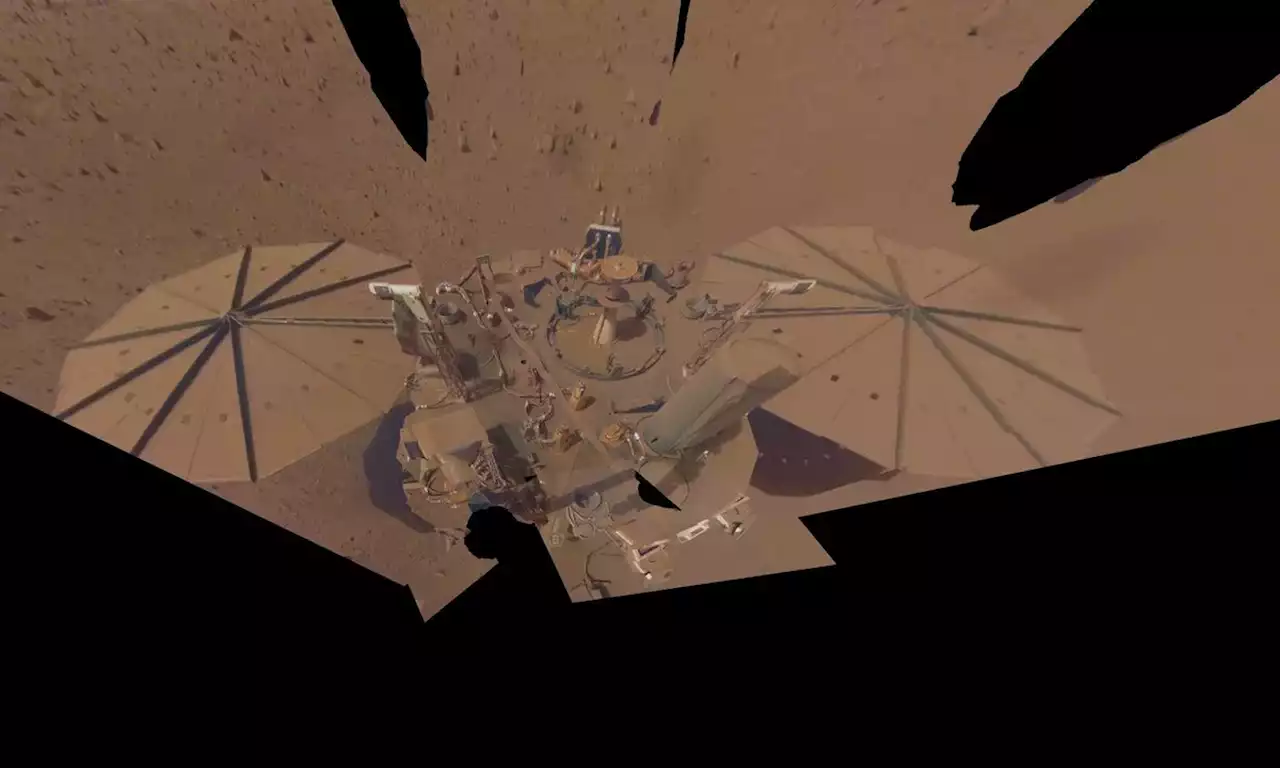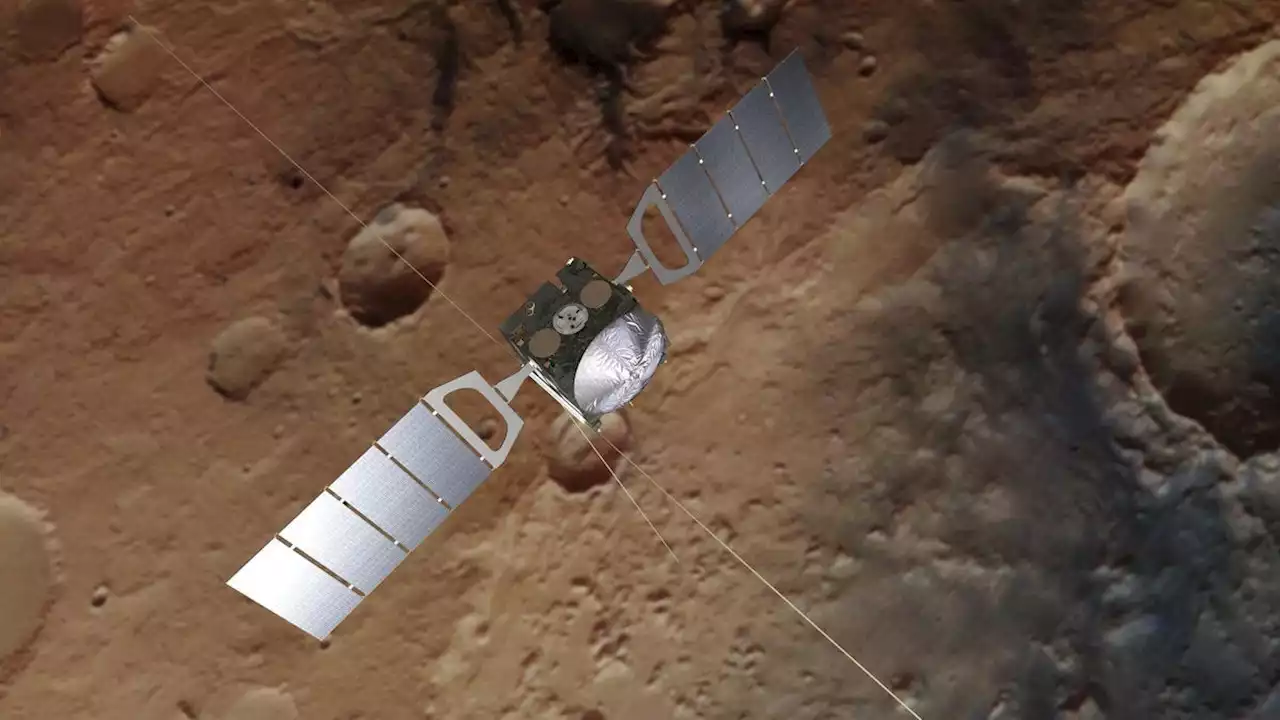The software was originally designed over 20 years ago based on the now-outdated Microsoft system.
orbiter’s MARSIS software, 19 years after the spacecraft launched. The MARSIS instrument, the first radar sounder to orbit another planet, aided in the discovery of evidence for water on Mars in 2018. MARSIS sends low-frequency radio waves towards the planet using a huge, 131 foot long antenna, as the Mars Express spacecraft orbits around Mars.
The MARSIS does all of that using highly outdated software that hasn’t been updated since the spacecraft launched in June 2003. The software was designed in an environment based on Windows 98, which doesn’t work with the modern-day internet unless you jump through a lot of hoops.
“Previously, to study the most important features on Mars, and to study its moon Phobos at all, we relied on a complex technique that stored a lot of high-resolution data and filled up the instrument’s on-board memory very quickly,” Cicchetti said. “By discarding data that we don’t need, the new software allows us to switch MARSIS on for five times as long and explore a much larger area with each pass.
The indoor portable evaporative air cooler distributes cool air through the honeycomb cooling media while the dust filter cleanses the air.
South Africa Latest News, South Africa Headlines
Similar News:You can also read news stories similar to this one that we have collected from other news sources.
 This Week @NASA: Nuclear Power on Moon, Changing Mars Landscape, Black Space ExplorersLooking to power surface exploration on the Moon … New imagery from the surface of Mars …. And our newest flight directors … a few of the stories to tell you about – This Week at NASA! https://youtu.be/c6vpK46pAHo NASA Announces Artemis Concept Awards for Nuclear Power on Moon NASA an
This Week @NASA: Nuclear Power on Moon, Changing Mars Landscape, Black Space ExplorersLooking to power surface exploration on the Moon … New imagery from the surface of Mars …. And our newest flight directors … a few of the stories to tell you about – This Week at NASA! https://youtu.be/c6vpK46pAHo NASA Announces Artemis Concept Awards for Nuclear Power on Moon NASA an
Read more »
 Dust Devils and Strong Winds Produce the Constant Haze on MarsDust is an everyday feature on Mars and wreaks havoc on various pieces of equipment humans decide to send to it, such as Insight’s continual loss of power or the losses of Opportunity and Spirit. But we’ve never really understood what causes the dust to get up into the air in the first place. That … Continue reading 'Dust Devils and Strong Winds Produce the Constant Haze on Mars'
Dust Devils and Strong Winds Produce the Constant Haze on MarsDust is an everyday feature on Mars and wreaks havoc on various pieces of equipment humans decide to send to it, such as Insight’s continual loss of power or the losses of Opportunity and Spirit. But we’ve never really understood what causes the dust to get up into the air in the first place. That … Continue reading 'Dust Devils and Strong Winds Produce the Constant Haze on Mars'
Read more »
 Never-before-seen microbes in Arctic could aid search for life on MarsThe researchers found that the microorganisms can survive by eating and breathing simple inorganic compounds of a kind that have been detected on Mars, such as methane and carbon dioxide.
Never-before-seen microbes in Arctic could aid search for life on MarsThe researchers found that the microorganisms can survive by eating and breathing simple inorganic compounds of a kind that have been detected on Mars, such as methane and carbon dioxide.
Read more »
 This giant map of minerals on Mars is a piece of modern art | Digital TrendsNASA recently released the first part of a map of the martian surface, in the form of a 5.6 gigapixel image in 72 colors.
This giant map of minerals on Mars is a piece of modern art | Digital TrendsNASA recently released the first part of a map of the martian surface, in the form of a 5.6 gigapixel image in 72 colors.
Read more »
 From Windows 98 to Mars 2022: Major Upgrade for 19-Year-Old Martian Water-SpotterThe MARSIS instrument on the European Space Agency’s Mars Express spacecraft, famous for its role in the discovery of signs of liquid water on the Red Planet, is receiving a major software upgrade that will allow it to see beneath the surfaces of Mars and its moon Phobos in more detail than ever bef
From Windows 98 to Mars 2022: Major Upgrade for 19-Year-Old Martian Water-SpotterThe MARSIS instrument on the European Space Agency’s Mars Express spacecraft, famous for its role in the discovery of signs of liquid water on the Red Planet, is receiving a major software upgrade that will allow it to see beneath the surfaces of Mars and its moon Phobos in more detail than ever bef
Read more »
 Despite its draining power, NASA’s InSight Mars lander is determined to squeeze as much science as it can until the very last momentIts solar panels are caked with dust and the batteries are running out of juice, but NASA’s InSight Mars lander continues to soldier forth collecting more science about the Red Planet until its very last beep. To conserve energy, InSight was projected to shut down its seismometer—its last operational science instrument—by the end of June, … Continue reading 'Despite its draining power, NASA’s InSight Mars lander is determined to squeeze as much science as it can until the very last moment'
Despite its draining power, NASA’s InSight Mars lander is determined to squeeze as much science as it can until the very last momentIts solar panels are caked with dust and the batteries are running out of juice, but NASA’s InSight Mars lander continues to soldier forth collecting more science about the Red Planet until its very last beep. To conserve energy, InSight was projected to shut down its seismometer—its last operational science instrument—by the end of June, … Continue reading 'Despite its draining power, NASA’s InSight Mars lander is determined to squeeze as much science as it can until the very last moment'
Read more »
